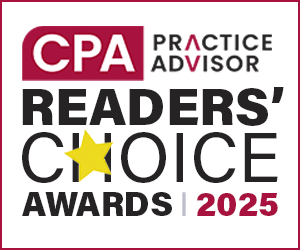Column: Technology in Practice
June 2011 Online Exclusive
In most firms, the internal administrative department is among the last to adopt less paper technologies because the focus of most firms is on tax and audit production. Having said that, there are a lot of opportunities to update administrative processes to take advantage of today’s “less paper” technologies, and many have a very short ROI. This article will take a look at 10 opportunities firms should consider in order to optimize their administrative department today.
1. Digital Paystub Delivery: Many firms spend a significant amount of time stuffing paystubs into envelopes and delivering them to employees who might take a quick look and then either shred the document or store it in a drawer to dispose of at a later time. The majority of today’s payroll systems can deliver paystubs digitally via a secured portal or private email account. This process reduces the amount of manual handling for both the firm and the employee and delivers the information in a more timely fashion.
2. Integrate Expense Reimbursement with Payroll: We often see 10% or more of the checks written by a firm having to do with reimbursements of personnel expense reports, with some firms processing them it as often as weekly. When these checks are smaller amounts, they tend to go into coat pockets or get set aside for when the individual has time to go to the bank. This can delay deposits and put them on the firm’s “outstanding” check list, with some checks being lost or misplaced and creating additional administrative processes. By reimbursing these checks within the normal payroll cycle as a non-taxable reimbursement, the amounts can be direct deposited so they are immediately available to the employee, and the firm reduces the number of checks written, which in turn reduces their transaction fees with their banks.
3. Process Expense Reports through Practice Management: Instead of filling out manual or Excel-based expense reports where the information also has to be keyed into Practice Management, train your personnel to enter all expenses daily into Practice Management at the same time they are entering their time. They can then generate the expense report from within Practice Management and attach the receipts for routing and approval. Training personnel to be comfortable scanning in receipts and attaching them to a PDF version of the expense report will allow the entire document to be routed via email. Please note that the submission deadlines have to be backed up to allow for the approval process to be completed and entered into the payroll system on a timely basis.
4. Utilize Remote CheckScan for Deposits: The process that many firms go through when the mail arrives is often a site to see where depositing checks becomes a priority before the bank closes for the day. This is often one of the most manually intensive administrative processes because after the checks arrive they are often copied, deposit slips made (and stored by different departments), and a person physically delivers them to the bank before closing time. Instead of constantly rushing, most banks today provide scanners to the firm for a minor monthly fee to allow firms to scan in the check in their own office and have it deposited up to 6:00 p.m. or later. The bank provides a summary image of all the checks, which can then be routed to necessary parties via email and then stored in the firm’s banking directory. After 30 to 60 days, the firm shreds the batch of checks, which saves a lot of time overall compared to going to the bank, and also eliminates the manual filing of all those check copies.
5. Deliver Firm Financial Reports via Portal: The best way to get owners onboard with using the firm’s digital tools is to put them in the same position as their clients. Instead of manually distributing firm financial reports as PDF attachments, or worse, in paper format where each partner has to individually decide whether to file or shred them, make them log into the firm’s secure portal to access the document. This is done for two reasons: so they are comfortable using it themselves and can confidently recommend portal use to clients. Most of today’s portal solutions have very strong access controls and have an audit trail so the firm’s controller can be made aware of who has accessed the statements and when. The portal is also available via the web at the owner’s convenience so there is no excuse for not being able to get them because they are out of the office.
6. Transition As Many Payables as Possible to Dedicated Credit Card: Traditional payables processes start by placing an invoice into an aging folder, where they are then selected to be paid when due, a check written and attached to the invoice, so they can then be sent to a partner for approval and signature. The partner than returns the check and invoice to administrative personnel to separate the parts that get stuffed into an envelope and the parts that are stapled and filed in a designated accounts payable folder, which needs to be created each year and then stored manually as long as the firm’s retention policy dictates. If you think this sounds like a lot of steps, you are right! Firms can significantly reduce the amount of handling by designating a single accounts payable credit card under the control of the firm’s bookkeeper and letting them have automatic payments made for all recurring vendors (which is usually more than 90% of the invoices). The vendor will then email the invoice via a PDF or provide access to a digital copy through their portal, where the firm will make the same entry as they would on a manual check, but they will date the charge according to when the vendor dictates. This is usually the last day due so it eliminates the timing processes done in the past. If the firm saves the file with the proper naming convention (20110815 Sprint RK) into a payables directory or file folder in the document management system, the controller will be able to easily search by date, vendor or other unique identifier. Payables files will then be backed up by the IT team on a regular basis and future filing and storage reduced. By having a card that rebates the firm with cash back, the credit card can provide a 1% to 3% “discount” on all purchases the firm makes.
7. Move Remaining Payables to Web-Based Workflow Companies: The reality today is that some vendors still don’t accept digital payments, so for the remaining vendors where manual checks are required, firms can use a service like Bill.com or AnyBill.com that will manage the workflow digitally. These services usually have a flat monthly fee and an individual payable transaction processing charge, which is less than the firm’s cost for an envelope and postage, and they do the routing and reminders so an invoice can’t be easily forgotten. These vendors also provide digital source images so that all the firm’s invoices can be filed in the same location.
8. Link Images of Source Documents to Accounting: Leading accounting programs also have the ability to attach an image of a source document to the journal entry, check entry, deposit, etc., such that if the controller drills down from the entry, they can actually see an image of the source document used to create it, which makes for a completely digital accounting system. Third-party products such as Personable SourceLink or Cabinet NG have had in-firm products that allowed firms to store the documents internally, and now QuickBooks 2011 has both an internal document management solution and a web-based “attached document” service that allows firms to store images of source documents on premise, or on the web.
9. Make the Most of On-screen Billing: The traditional manual billing process required WIP sheets to be printed, marked up and keyed in, so an invoice could be generated and sent to the biller for approval. Today’s Practice Management products do a good job of on-screen bill generation and promote faster billing (and faster collections). The person in direct charge for client work is usually fairly computer literate and is comfortable creating the draft of the invoice on-screen, which can then be sent to the owner in charge for approval or adjustment. This lets the owner know the billing “fortitude” of the in-charge and then when they eventually become an owner, will transition all their billing to “on-screen.”
10. Utilize Digital Invoices: Just as payables processing is time and paper intensive, the process that most firms go through to deliver an invoice requires a lot of handling and paper, envelopes and postage. Most business users are becoming comfortable with digital invoices in their own firm so they are the easiest to target for generating a PDF of the invoice and delivering it either through email or the client’s portal. Once the business owner is comfortable with this process, it can be used to deliver their personal invoices, and eventually copies of their tax returns and organizers. Invoices will go out faster, and the firm will have a record of when they were sent and to whom so they can be easily re-sent if the client “didn’t receive the invoice.”
While most firms focus on fine-tuning their tax and audit production practices, don’t forget about administration because there can be significant savings in both time and resources, which will definitely impact the firm’s bottom line.
Roman H. Kepczyk, CPA.CITP is Director of Consulting for Xcentric and works exclusively with accounting firms to optimize their internal production processes within their tax, audit, client services and administrative areas. He recently updated his Quantum of Paperless Guide (Amazon.com) which outlines 32 digital best practices for accounting firms.
Thanks for reading CPA Practice Advisor!
Subscribe Already registered? Log In
Need more information? Read the FAQs
Tags: Technology





